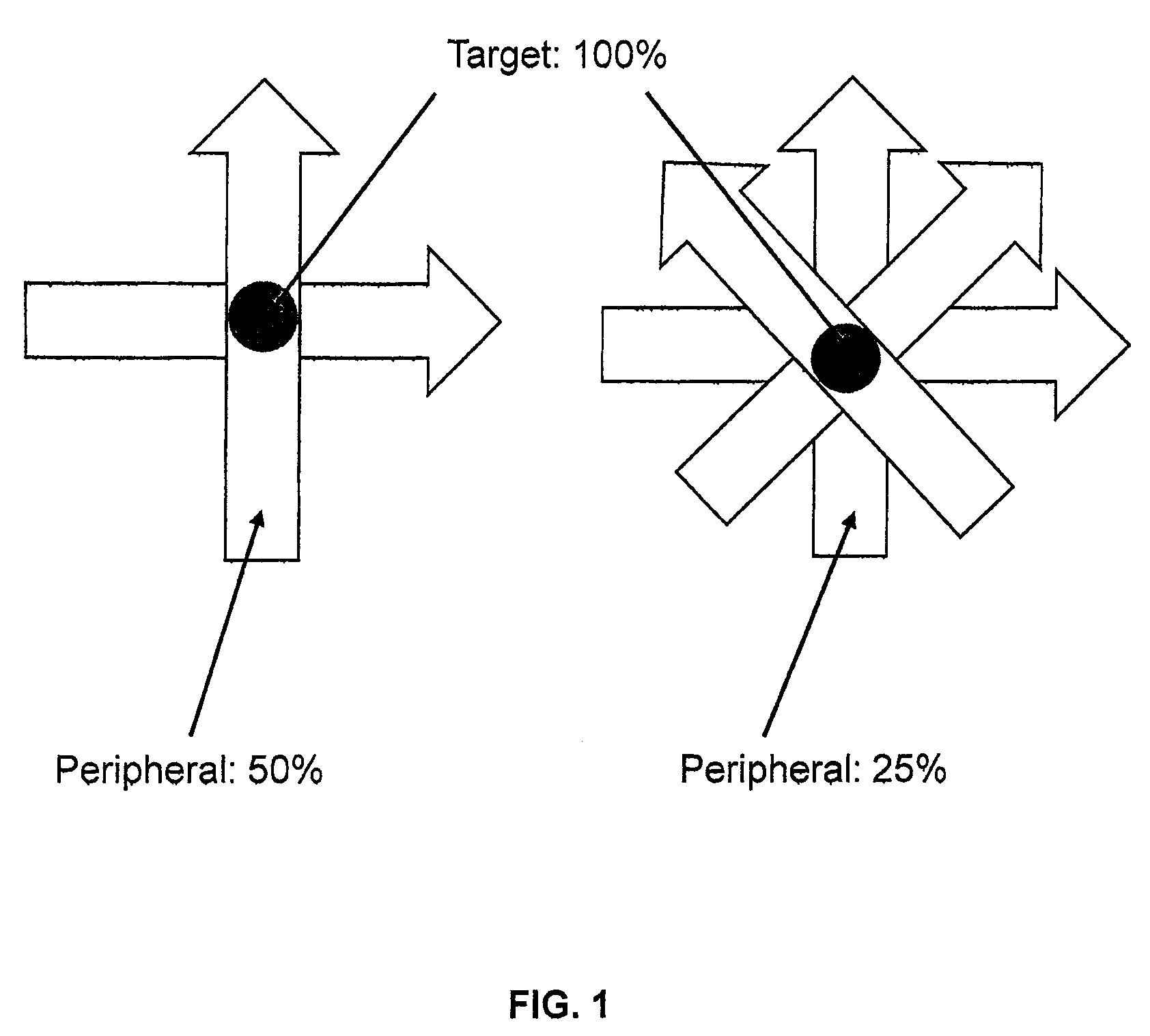System and methods of photon-based radiotherapy and radiosurgery delivery
a radiation therapy and radiosurgery technology, applied in the field of photon-based radiotherapy, can solve the problems of not being able to deliver more than a dozen beams, not being able to drill a large number of apertures in a fixed size metal screen without eventually causing interference among the beams, etc., to achieve the effect of improving the quality of radiosurgery and increasing the dose fall-off ra
- Summary
- Abstract
- Description
- Claims
- Application Information
AI Technical Summary
Benefits of technology
Problems solved by technology
Method used
Image
Examples
Embodiment Construction
[0047]The present invention is now described in detail with reference to preferred embodiments as illustrated in the accompanying drawings. In the following description, numerous specific details are set forth in order to provide a thorough understanding of the present invention. It is apparent, however, to one skilled in the art, that the present invention may be practiced without some or all of these specific details. In other instances, well known process steps and / or structures are not described in detail in order to not unnecessarily obscure the present invention.
[0048]The present invention uses a new optimization paradigm, in which “kernelling and de-convolution” occurs in the following steps: Step 1—(Kernelling) Dose kernels approximating the radiation dose distributions of about 10,000 focused beams are created by convolving thousands of equivalent beams via preset 3D trajectories; Step 2—(Dose painting) The dose kernel is viewed as a 3D “paintbrush” and an optimal route of ...
PUM
 Login to View More
Login to View More Abstract
Description
Claims
Application Information
 Login to View More
Login to View More - R&D
- Intellectual Property
- Life Sciences
- Materials
- Tech Scout
- Unparalleled Data Quality
- Higher Quality Content
- 60% Fewer Hallucinations
Browse by: Latest US Patents, China's latest patents, Technical Efficacy Thesaurus, Application Domain, Technology Topic, Popular Technical Reports.
© 2025 PatSnap. All rights reserved.Legal|Privacy policy|Modern Slavery Act Transparency Statement|Sitemap|About US| Contact US: help@patsnap.com



